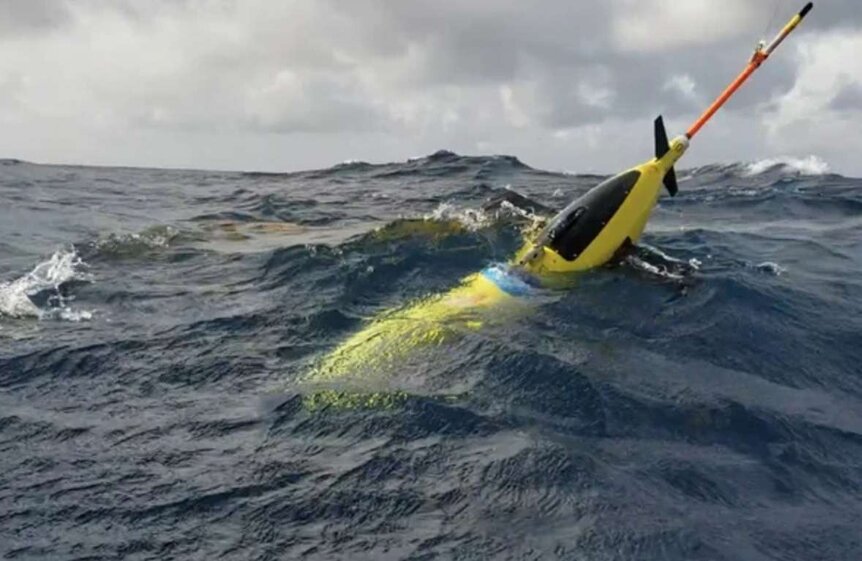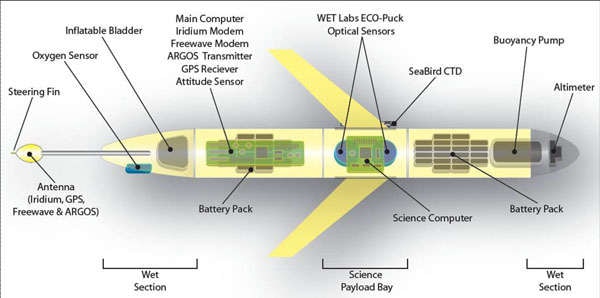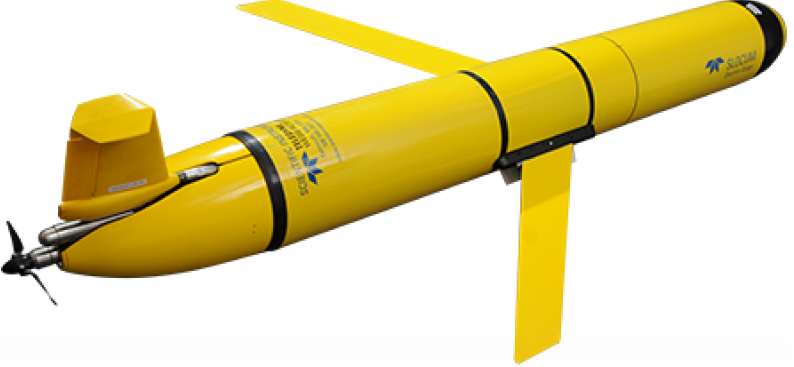Create a free profile to get unlimited access to exclusive videos, sweepstakes, and more!
Tough new fleet of robotic hurricane sensors even survives hungry sharks

Bobbing in and just below choppy coastal waters collecting data too difficult for satellites to detect, a new armada of tough, torpedo-shaped aqua gliders are being deployed around the U.S. to provide advanced detection for dangerous hurricanes hell-bent for dry land.
These hi-tech swarms of robotic sensors are designed to aid researchers in attempting to learn how destructive storms evolve when rising ocean temperatures contribute to their severity as they encroach upon inland areas. And when Mother Nature pitches a fit and unleashes its wind and rain-driven fury this hurricane season, these rugged devices that are even shark-proof will be on the job acquiring info.
The ocean-ready Slocum ocean gliders will be stationed in out-of-the-way coastal corners devoid of sea vessels or human presence and away from the vigilant eyes of orbiting weather satellites. For 2020, the National Oceanic and Atmospheric Administration will send its mini-Navy of 30 sensor-stuffed gliders out into no-man's-land to trace and monitor massive, potentially devastating squalls.
“We have gliders that have gone through two or three hurricanes already,” Gustavo Goni, lead scientist at Miami's Atlantic Oceanographic and Meteorological Laboratory, told Scientific American. “They are robust. They don’t even care. Some of them have even been in fights with sharks. We know this because we find sharks’ teeth in gliders when we recover them.”
Hurricanes pull their power from surface waters down to approximately 74 feet, and any degree of extra heat mixing with the storm can add a serious dose of fuel to the figurative fire. Cooling top layers of water can contribute to a calming hurricane, while added warmth is a dangerous cocktail.
“You want to have the right forecast. If the public is told a Category 5 storm is coming and then they get a Category 3, then they don’t believe you the next time you make a forecast,” Goni added.
Invented by Massachusetts oceanographer Douglas Webb, the Slocum ocean glider is aptly named after Joshua Slocum, the first person to sail around the world solo aboard his intrepid sloop, Spray, in 1898. An account of his incredible voyage can be read in Slocum's 1900 memoir, Sailing Alone Around The World.
Gliders are extremely versatile and can perform in both shallow and deep waters, and may be equipped with up to 45 different sensor variations and combinations. Surfacing gliders radio data to orbital satellites.
These 6-foot-long, unmanned electric research vehicles are built by Teledyne Webb Research and classified as Autonomous Underwater Vehicle Gliders (AUVGs). Each hull is crafted from carbon fiber and aluminum and has a generous payload bay for diverse missions. Data transfer and communication is accomplished via Iridium or radio frequency (RF) modem.
Change in buoyancy alters the pitch and generates forward motion. Its external oil bladder is filled or drained to vary buoyancy and the pair of aircraft-like wings convert vertical velocity into movement. Multiple ascents and descents give the dutiful machine a vertical "sawtooth" trajectory. It navigates to precise waypoints using surface GPS corrections to refine dead reckoning data.
“This is not just about gliders or floats, it’s about combining everything, even satellite observations," Goni notes. "When you put all that together, you have even more value to understand the ocean conditions. This is a big gap that we are filling with this type of instrumentation.”





























